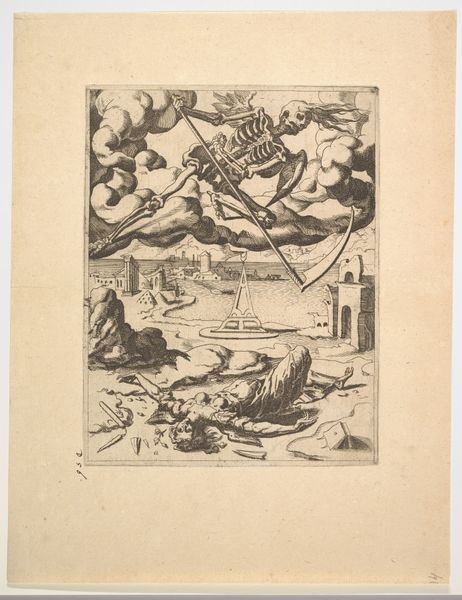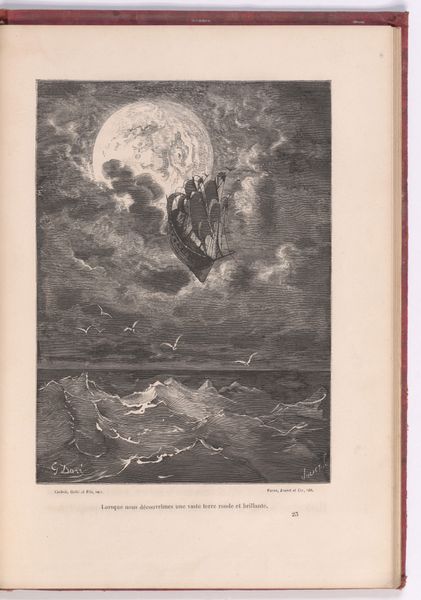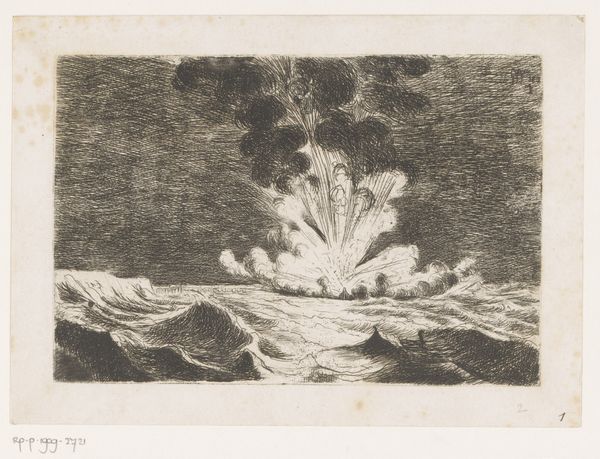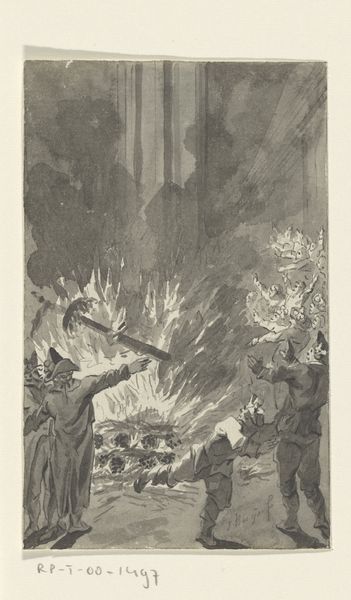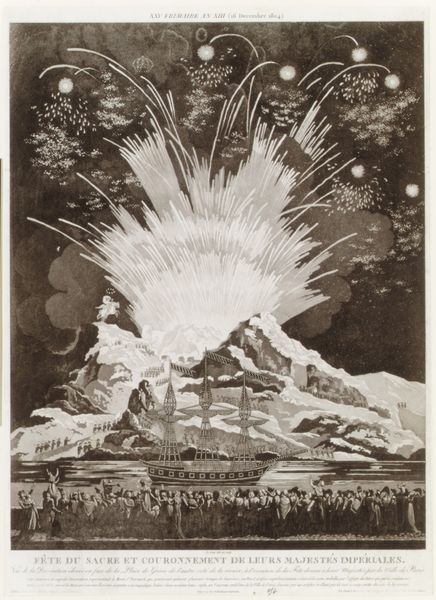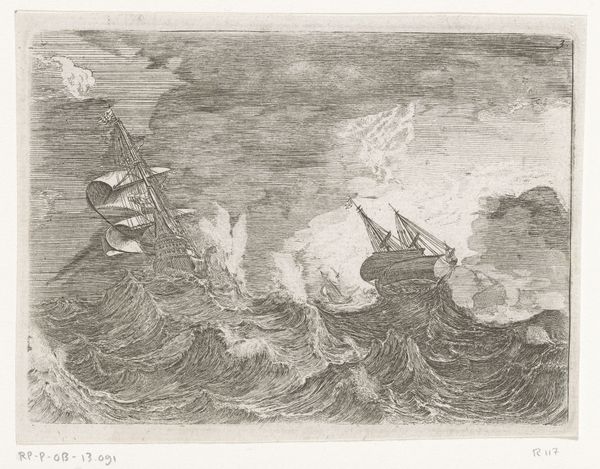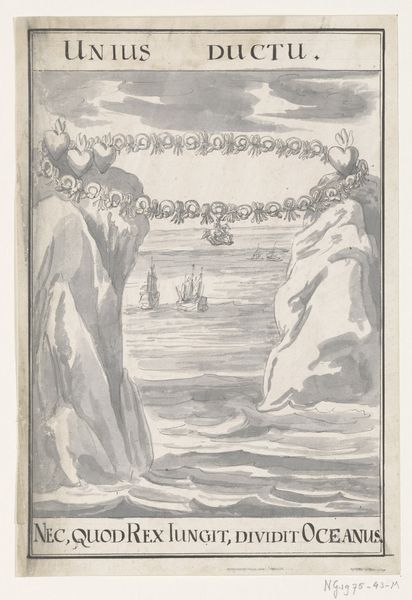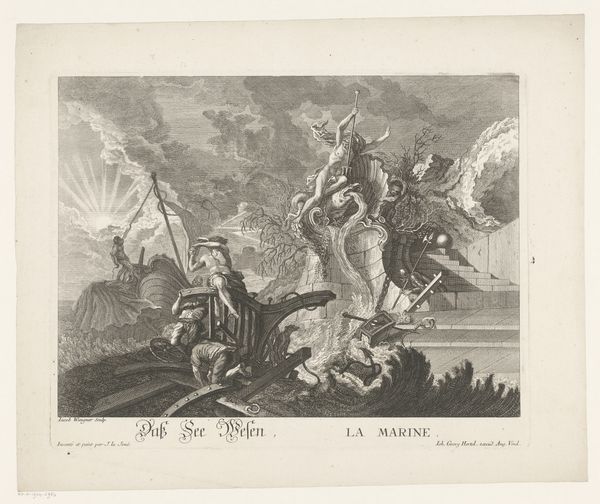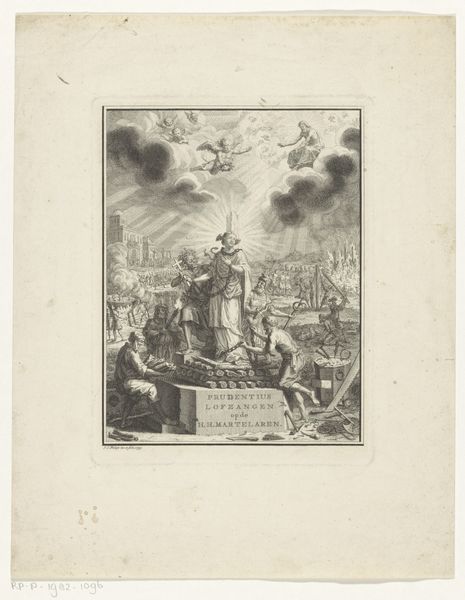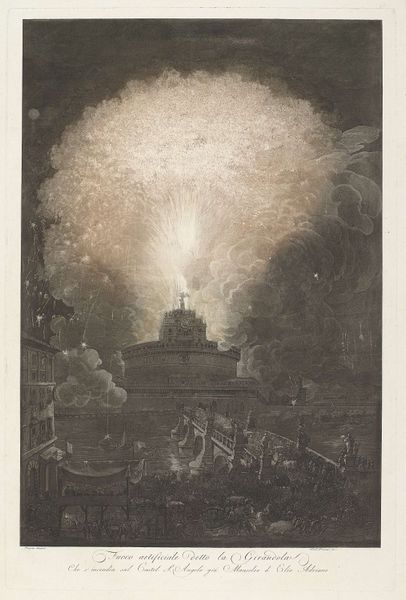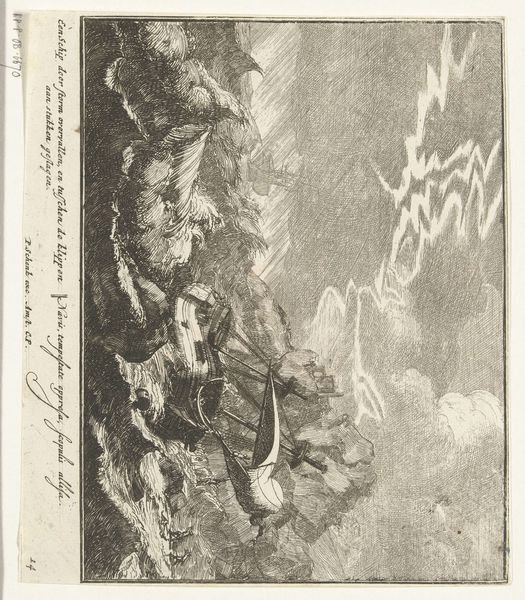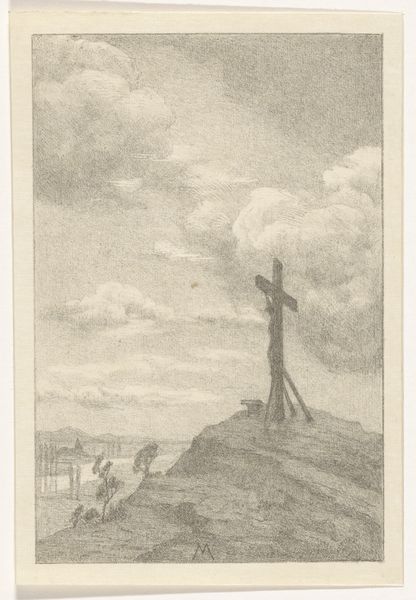
Dimensions: Plate: 11 × 7 1/4 in. (28 × 18.4 cm) Sheet: 11 1/4 × 7 3/8 in. (28.5 × 18.7 cm)
Copyright: Public Domain
Curator: Look at this eruption! I find it to be mostly dramatic, what do you think? Editor: It’s undeniably awe-inspiring. What strikes me is the deliberate arrangement of forms, the almost geometric structure imposed upon this natural chaos. Curator: Quite so. This is Louis Boily's "Eruption of Vesuvius, August 8, 1779," created that very year. It is, as we see, an engraving. What's your sense of Boily's interest here, in choosing this scene? Editor: Historically, the print captures the allure of Vesuvius, a popular subject in the late 18th century given its historical significance. Boily created this depiction, perhaps to document and disseminate information. Volcanic eruptions are often interpreted as symbols of political upheaval or societal transformation—visual emblems for an era marked by revolution and change. What’s more, popularization via printed media democratized this scene in a certain way. Curator: I am curious as to your read of how that era might be encoded in Boily’s formalism. How does Boily capture the event? Consider the stark contrast between the dark sky and the fiery plume. Editor: Certainly. He masterfully exploits the contrast, doesn't he? The eruption itself is rendered in this cascade of bright white markings, seemingly radiating outwards. See also, these diagonal lines mimicking the force of lightning—each mark functions like an exclamation point, accentuating the sublime power on display. Curator: And then below, we have, as well, tiny, almost insignificant figures watching. What is the relation of their viewing, as Boily has rendered them? Editor: Their presence is so small it reinforces this sense of nature's immensity against humanity. In their act of watching, Boily reminds us that viewing nature is never unbiased—that it is always shaped by one’s place and status, even when confronted by the extraordinary. Curator: Interesting indeed. Any last considerations? Editor: Yes, it would be worthwhile to understand how such dramatic natural phenomena shaped art appreciation, exhibition strategies, and natural studies, influencing artistic expression and Romantic sensibilities about nature. Curator: An excellent perspective, helping us comprehend not only the image itself but also its place within cultural history. Thank you.
Comments
No comments
Be the first to comment and join the conversation on the ultimate creative platform.
